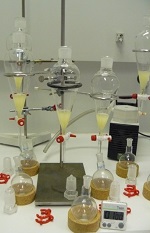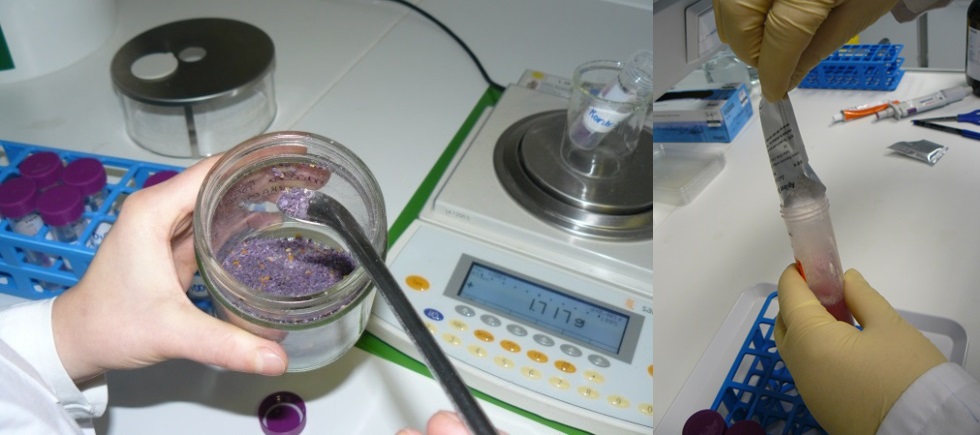- Your Product Type
- Your Study Type
- Aquatic Ecotoxicology
- Aquatic Invertebrates
- OECD 202: Daphnia sp., Acute Immobilisation Test
- OECD 211: Daphnia magna Reproduction Test
- OECD 235: Chironomus sp., Acute Immobilisation Test
- OECD 218/219: Sediment-Water Chironomid Toxicity Test Using Spiked Sediment/Spiked Water
- OECD 233: Sediment-Water Chironomid Life-Cycle Toxicity Test Using Spiked Water or Spiked Sediment
- OECD 225: Sediment-water Lumbriculus Toxicity Test Using Spiked Sediment
- OECD 242: Potamopyrgus antipodarum Reproduction Test
- OECD 243: Lymnaea stagnalis Reproduction Test
- Fish and other vertebrates
- OECD 203: Fish, Acute Toxicity Test
- OECD 215: Fish Juvenile Growth Study
- OECD 212: Fish, Short-term Toxicity Test on Embryo and Sac-fry Stages
- OECD 231: The Amphibian Metamorphosis Assay
- OECD 236: Fish Embryo Acute Toxicity Test
- OECD 210: Fish, Early-life Stage Toxicity Test
- OECD 229 Fish Short Term Reproduction Assay and OECD 230 21-day Fish Assay
- OECD 240 Medaka Extended One Generation Reproduction Test (MEOGRT)
- OECD 248: Xenopus Eleutheroembryonic Thyroid Assay
- OPPTS 850.1500: Fish Life Cycle Toxicity Test
- OÈCD 234 Fish sexual development test
- Aquatic plants
- Analytical Dose Verification
- Aquatic Invertebrates
- Chemistry
- Biodegradation Studies
- Analytical Chemistry Studies and Residues
- Physical-Chemical Properties Studies
- Storage Stability Studies
- OPPTS 830.6302, OPPTS 830.6303,and OPPTS 830.6304: Physical State, Colour and Odor at 20 °C and at 101.3 kPa
- EU A.1: Melting temperature/range
- EU A.2: Boiling temperature
- EU A.3: Relative density (liquids and solids)
- EU A.4: Vapour pressure
- EU A.5: Surface tension
- EU A.9: Flashpoint
- EU A.10: Flammability (solids)
- EU A.12: Flammability (contact with water)
- EU A.13: Pyrophoric properties of solids and liquids
- EU A.16: Relative self-ignition temperature for solids
- EU A.17: Oxidising properties
- OECD 114: Viscosity of Liquids
- Environmental Fate
- Transformation in Soil
- Transformation in Water
- Transformation in Manure
- Adsorption on Soil and Sewage Sludge
- Bioaccumulation and Bioconcentration
- Terrestrial Ecotoxicology
- Non-target Arthropods
- Non-target arthropod testing with the parasitic wasp (Aphidius rhopalosiphi)
- Non-target arthropod testing with the lacewing (Chrysoperla carnea)
- Non-target arthropod testing with the ladybird beetle (Coccinella septempunctata)
- Non-target arthropod testing with the predatory bug (Orius laevigatus)
- Non-target arthropod testing with the predatory mite (Typhlodromus pyri)
- Non-target arthropod testing with the rove beetle (Aleochara bilineata)
- Non-target arthropod testing with the carabid beetle (Poecilus cupreus)
- Non-target arthropod testing with the wolf spider (Pardosa spec.)
- Soil Organisms
- Honey Bees and other Pollinators
- OECD 213/214: Honey bees, Acute Oral and Acute Contact Toxicity Test
- OECD 245: Honey Bee (Apis Mellifera L.), Chronic Oral Toxicity Test (10-Day Feeding)
- OECD 237: Honey Bee Larval Toxicity Test, Single Exposure
- OECD 239: Honey Bee Larval Toxicity Test
- EPPO 170: Honey Bee Field Study – do plant protection products effect honey bee colonies?
- Oomen et al. 1992: Honey Bee Brood Feeding Study
- OECD 75: Honey Bee Brood Test under Semi-field Conditions in Tunnels
- OECD 246/247 Acute Oral and Contact Toxicity to the Bumblebee, Bombus terrestris L.
- Solitary Bee Acute Contact Toxicity Study in the Laboratory (Osmia sp.) Solitary Bee Acute Oral Toxicity Study in the Laboratory (Osmia sp.) (protocols for ringtests with solitary bees recommended by the non-Apis working group)
- SANTE/11956/2016 rev.9 Residue trials for MRL setting in honey
- Non-target plants
- OECD 208: Terrestrial Plant Test - Seedling Emergence and Seedling Growth Test
- OECD 227: Terrestrial Plant Test - Vegetative Vigour Test
- OCSPP 850.4100: Seedling Emergence and Seedling Growth
- OCSPP 850.4150: Vegetative Vigor
- EPPO PP 1/207(2): Efficacy evaluation of plant protection products, Effects on succeeding crops
- Field Studies
- Non-target Arthropods
- Ecological Modelling
- Quality Assurance
- Testing of Potential Endocrine Disruptors
- Aquatic Ecotoxicology
- News
- Company
- Career
- Contact
Development and Validation of an Analytical Method for the Determination of Active Ingredient or Formulated Test Item in Matrix
Besides classical physical-chemical studies, like a water solubility test, more and more (ecotoxicological) studies performed at ibacon require the analytical determination of the concentration of active ingredient or formulated product in all kinds of different matrices due to new guideline demands.
This can be a dose verification in aqueous samples taken from an acute fish test, the analysis of a spraying solution from a plant study to confirm the targeted nominal application rate or the determination of residues in bees and bee products sampled during a field trial.
Additionally, for manufacturers seeking pesticide authorisation it is necessary to provide analytical methods for post-registration monitoring and control in matrices like plants and plant products, foodstuff of plant and animal origin, drinking-, ground- and surface water and soil.
 For all these purposes it is essential to have a reliable and robust method of analysis to produce meaningful data. This will be ensured by performing a method validation:
For all these purposes it is essential to have a reliable and robust method of analysis to produce meaningful data. This will be ensured by performing a method validation:
Validation is the confirmation by examination and the provision of objective evidence that the particular requirements for a specific intended use are fulfilled. [ISO/IEC 17025 definition]
The extent of a validation should reflect its intended purpose and should include but is not limited to: establishment of a Limit of Quantification (LOQ) and Limit of Detection (LOD), linearity, specificity, accuracy and precision.
Primary methods for post-registration monitoring and control purposes are validated according to requirements given by SANCO guideline 825/00. For some matrices like plants, plant products, foodstuff of plant origin and in feeding stuff, etc. an additional validation of the primary method must be performed by an independent laboratory. This independent laboratory validation (ILV) shall confirm the LOQ of the primary method.
Study Design
Course of the test
The challenge for our analytical team is to develop, adapt, implement and/or validate analytical methods which are suitable for the determination of concentrations of the active ingredient from e.g. several g/L down to sub-ppb levels in all kinds of matrices (e.g. water, plants, foodstuff of plant or animal origin, soil, etc.). De
We use a wide range of analytical instruments at our disposal that allows us to analyse almost every kind of substance e.g.
- UPLC and HPLC with UV, DAD, or ELSD detection
- LC MS-MS
- GC-MS
- GC-FID/ECD
- GF-AAS (graphite furnace atom absorption spectroscopy)
- IC (ion chromatography)

Method Development
Our analytical team is used to develop an appropriate method with the required sensitivity for the forced concentration range. Method development is carried out under non-GLP conditions. During this stage of method development an appropriate instrument and detection method is chosen (e.g. LC-MS/MS detection using a specific column), along with any necessary sample preparation (e.g. liquid-liquid extraction, SPE, pre-concentration, dilution, filtration, centrifugation, etc.).
Main Study and Method Verification
The final method will be validated under GLP conditions alongside the analytical measurements of the main biological study samples. The validity of the method will be determined according to the validity criteria set out in the SANCO 825/00 guidelines. Fortified samples are prepared to check for the precision and accuracy of the method, and various blank samples are used to confirm the absence of analytical contaminants or interferences which could have entered the samples during sampling, sample preparation, or analysis. A calibration curve across the required concentration range is also prepared to confirm the linearity of the instrument response, and to be able to quantify the test substance in the biological samples. These data will be included in the final study report.
Guidelines and Literature
- SANCO/825/00 rev.8.1
